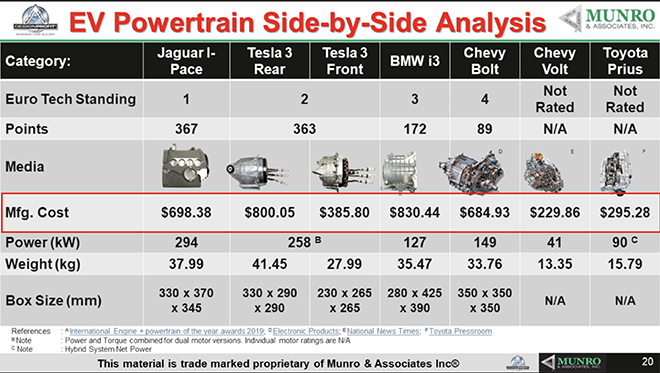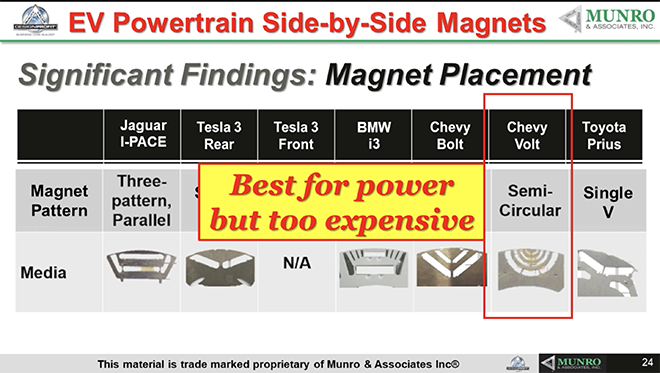
Auto manufacturing expert Sandy Munro knows what makes cars tick. For years, he and his company have performed teardowns, taking new cars apart and analyzing every little bracket and screw—what it’s made of, who made it, and how much it cost.
This week at the Charged Virtual Conference on EV Engineering, Sandy compared an assortment of electric motors used in current production EVs: the Jaguar I-PACE, Tesla Model 3, Audi e-tron, BMW i3, Chevy Bolt, Chevy Volt, Nissan LEAF and Toyota Prius. If you missed it, a recording of the conference session, Comparing 10 Leading EV Motors, is now available to watch on-demand.
(Don’t miss Murno’s next session, Tesla’s Inverter Technology Versus Other BEVs, broadcasting live Thursday, September 3 at 4:45 pm EDT.)
Munro did not tear down a Porsche Taycan, although he’s open to it if someone would like to donate one of the $160,000-dollar vehicles. However, he does discuss the Taycan, which has the distinction of operating at 800 volts, whereas other EVs use a 400-volt system. Porsche’s higher voltage seems likely to be the wave of the future as battery capacities grow larger and impatient consumers demand shorter charging times.
One of the goals of Munro’s teardowns is to figure out how much, if any, margin an automaker is earning on a particular model. Conventional wisdom is that the legacy brands have failed to make much profit on their EVs so far, and Munro’s research seems to confirm that. Sandy gives us a run-down on where the various automakers stand, profit-wise. (Spoiler alert: while a couple are barely in the black, and a few more hope to be soon, Tesla is the only one that has consistently generated a decent margin on EVs. Another spoiler alert: Tesla isn’t slipping Munro money to say things like this, although he admitted to owning a few TSLA shares during the Q&A session.)

The bulk of this presentation consists of a side-by-side comparison of the 10 electric motors. There’s a surprisingly large amount of variation. Not just in the details, but even in their basic architecture—some EVs use a permanent magnet motor, while others employ an induction motor (Tesla’s Model 3 uses one of each!).

There’s a tremendous amount of detail here, both technical and financial, so if you’re interested in the EV industry, you’ll want to watch the video in its entirety. If you’re actively involved in building EVs, you may even opt to buy Munro’s printed report.
source https://chargedevs.com/newswire/teardown-expert-sandy-munro-compares-10-leading-ev-motors-in-new-video/
No comments:
Post a Comment